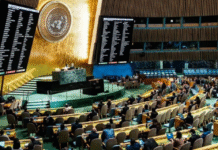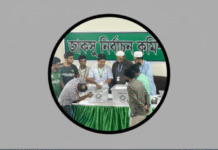
Buyers at an international leather fair in Italy should only buy goods from tanneries that comply with health laws and labour rights, said Human Rights Watch on Wednesday.
Such compliance should include respecting both national and international environmental standards, it said, adding that tanneries in Hazaribagh area of Bangladesh capital Dhaka do not meet these criteria.
Over 1,000 exhibitors from more than 40 countries will show new leather products at the three-day Lineapelle leather fair that opened Wednesday in Bologna.
Among the exhibitors are Bay Tanneries and Bengal Leather Complex Ltd, both of whose tanneries are in Hazaribagh.
Despite requirements for wastewater treatment under both Bangladeshi labour and environmental law, there was no common effluent treatment plant for tanneries in Hazaribagh to treat industrial wastewater, nor do any of the tanneries there have their own treatment plants, it said.
“Leather tanneries in the heart of Dhaka have been releasing toxic effluent into a densely populated neighbourhood for decades,” said Richard Pearshouse, senior researcher at Human Rights Watch.
“Foreign buyers at the Lineapelle fair shouldn’t buy products from companies that don’t abide by labour and environmental laws meant to protect people.”
Tanneries operating in Hazaribagh have been the focus of reports, studies, surveys, and even government findings dating to the 1990s that have documented a range of human rights abuses and problematic conditions in and around Hazaribagh tanneries. These include unregulated industrial pollution of air, water, and soil; illness among local residents; perilous working conditions; and labor by girls and boys – often in hazardous conditions and for menial pay.
Current employees from both Bay Tanneries and Bengal Leather Complex Ltd. confirmed to Human Rights Watch that their tanneries do not have plants to treat tannery wastewater. After many years of not enforcing any environmental regulations in Hazaribagh, the Department of Environment fined Bay Tanneries and one other Hazaribagh tannery – not Bengal Leather Complex Ltd. – in February for not having effluent treatment plants.
Human Rights Watch wrote to both Bay Tanneries and Bengal Leather Complex Ltd in February to request further information on occupational health and environmental protection measures. In its reply Bay Tanneries stated that the tannery does not have an effluent treatment plant because the company is waiting for the government to build a common effluent treatment plant at the designated relocation site for Hazaribagh tanneries, in Savar, 20 kilometers to the west. Bengal Leather Complex Ltd has not replied.
In 2003 the country’s two main tannery associations agreed with the government that some 150 member-tanneries in Hazaribagh would relocate to a site outside of the city, and the Bangladeshi government agreed to compensate these tanneries for some of the costs. The government planned to prepare a relocation site in Savar by 2005, but completion of the site has been delayed numerous times. In June 2012 officials in the two associations of tannery owners told Human Rights Watch they were negotiating compensation from the government for relocation to Savar considerably in excess of the amount previously agreed upon.
In October 2012, Human Rights Watch released the 101-page report which documented health problems among local residents of Hazaribagh slums.
The residents complained of illnesses such as fevers, skin diseases, respiratory problems, and diarrhea caused by the extreme tannery pollution of air, water, and soil.
The report, based on nine weeks of in-country research, also documented an occupational health and safety crisis among tannery workers, both men and women, including skin diseases and respiratory illnesses caused by exposure to tanning chemicals, and limb amputations caused by accidents in dangerous tannery machinery.
The report described how wastewater that pours off tannery floors and into Hazaribagh’s open gutters flows into Dhaka’s main river, and contains, among other substances, animal flesh, sulfuric acid, chromium, and lead.
The government has estimated that about 21 thousand cubic meters of untreated tannery effluent is released each day in Hazaribagh.
Pollutant levels in the wastewater frequently surpass Bangladesh’s permitted limits for tannery effluent, in some cases by many thousands of times the permitted concentrations.
“Hazaribagh is one of the most polluted urban environments in the world,” Pearshouse said.
“The Bangladesh government should see that regulating Hazaribagh leather and addressing the ongoing health crisis among Hazaribagh’s residents and tannery workers is essential to protecting the economic benefits of this industry.”
Source: UNB Connect









